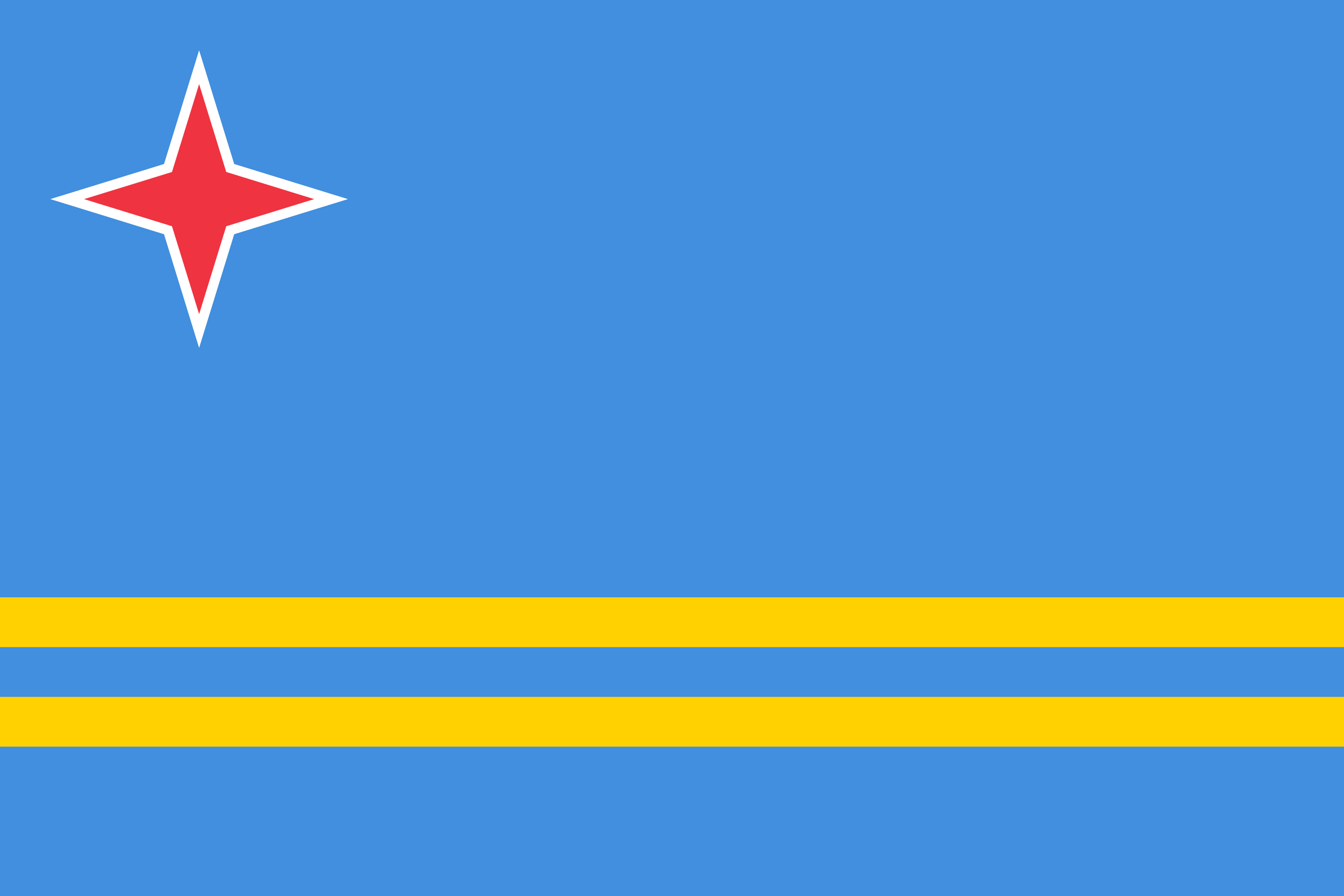Flags of Aruba

The flag of Aruba is a national symbol representing the Caribbean island territory of Aruba. Here are some facts about the flag of Aruba:
- Design: The flag of Aruba consists of a blue field with two narrow parallel yellow stripes at the bottom, and a red four-pointed star in the upper hoist-side corner. The blue represents the sea surrounding Aruba, the yellow symbolizes the sun, and the red star represents the four main languages spoken on the island: Papiamento, Dutch, Spanish, and English.
- Origin: The flag was officially adopted on March 18, 1976, when Aruba obtained the status of a separate and autonomous country within the Kingdom of the Netherlands. It was designed by a local artist named Roland Richardson.
- Sun, Sea, and Soil: The flag’s colors and star reflect Aruba’s natural features and cultural diversity. The blue represents the sky and the sea, which are integral parts of Aruba’s identity as a tropical island. The yellow represents the sun, symbolizing the island’s warm climate and hospitality. The red star represents the different languages spoken by the people of Aruba.
- Autonomy: The adoption of the flag marked a significant step in Aruba’s journey towards autonomy and self-governance within the Kingdom of the Netherlands. It represents the island’s distinct cultural identity and its ability to make independent decisions regarding its internal affairs.
- Display and Protocol: The flag of Aruba is flown throughout the island and is commonly seen at government buildings, schools, and private residences. It is also displayed during official ceremonies, national holidays, and events. The flag has specific protocols for its display, including proper positioning, handling, and folding.
- Flag Day: Aruba celebrates Flag and Anthem Day on March 18th each year to commemorate the adoption of the flag. It is a public holiday in Aruba and is marked by various cultural and patriotic celebrations, including parades, concerts, and exhibitions.
The flag of Aruba serves as a symbol of national pride, autonomy, and cultural diversity. It represents the island’s natural beauty, vibrant culture, and the unity of its people.